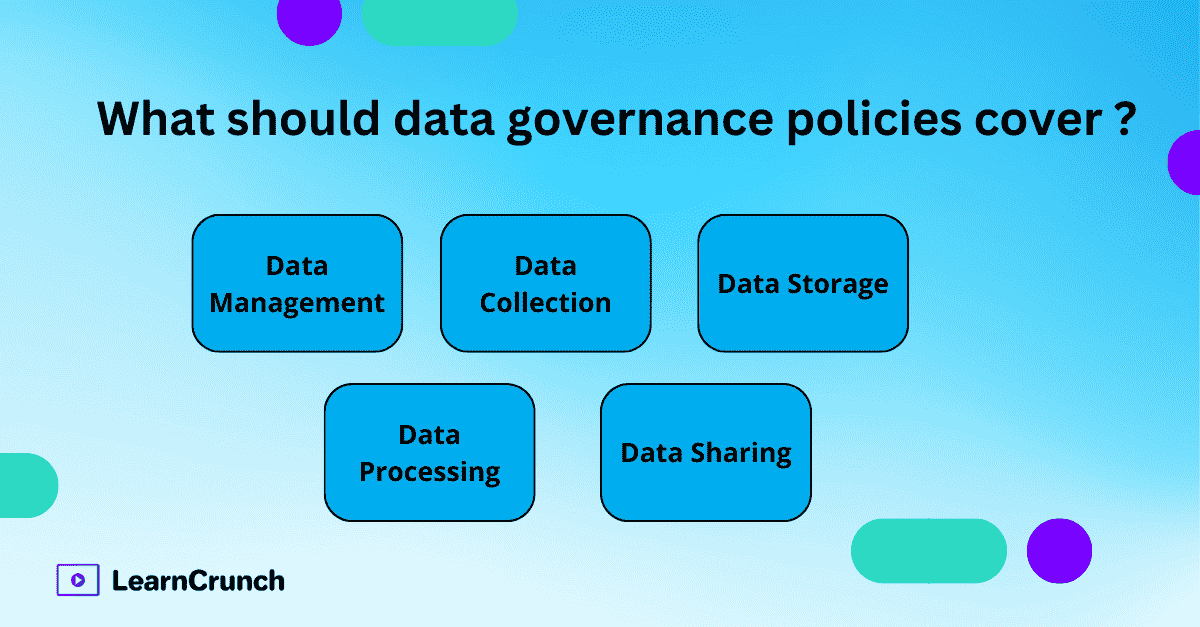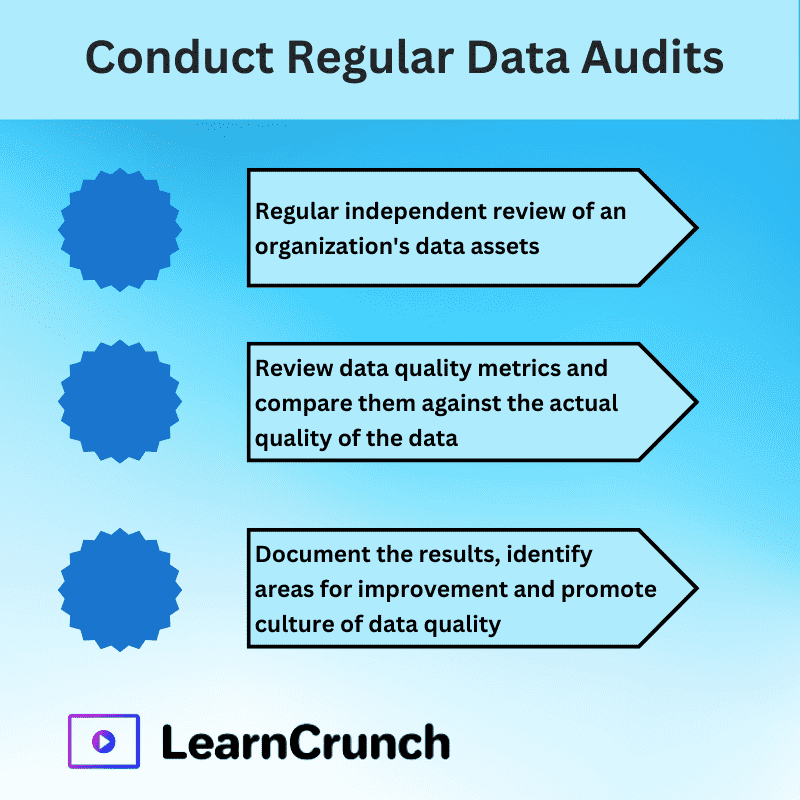As the amount of data continues to grow exponentially, maintaining data quality at scale is becoming an increasingly difficult challenge for many organizations. In order to make the most of the data that they collect, businesses need to ensure that their data is accurate, complete, and up-to-date. This is where data governance strategies come into play.
Data governance is the process of managing the availability, usability, integrity, and security of the data used in an organization. It involves defining policies and procedures for how data is collected, stored, processed, and shared. Data governance ensures that data is accurate, complete, and consistent across all systems, and that it is used appropriately.
Here are some data governance strategies that can help organizations maintain data quality at scale:
Define Data Quality Metrics
Defining data quality metrics is a critical step in maintaining high-quality data at scale. It involves identifying the key data elements that are critical to the organization and establishing quality criteria for each of them. Data quality metrics should be clearly defined, measurable, and aligned with the organization's goals and objectives.
To define data quality metrics, organizations should first identify the key data elements that are critical to their operations. These data elements could include customer information, financial data, product data, or any other data that is essential to the organization's core functions. Once these data elements have been identified, the organization should establish quality criteria for each of them.
Quality criteria for data elements may include accuracy, completeness, consistency, timeliness, and relevancy. For example, accuracy may be defined as the degree to which the data reflects the true state of affairs, while completeness may refer to whether all relevant data has been captured. Consistency may refer to whether the data is consistent across different systems and sources, while timeliness may refer to how quickly the data is available.
It's important to note that data quality metrics should be clearly defined and measurable so that progress can be tracked over time. This means that metrics should be specific, measurable, achievable, relevant, and time-bound (SMART). By establishing SMART metrics, organizations can monitor the quality of their data and identify areas for improvement.

Overall, defining data quality metrics is a critical step in maintaining high-quality data at scale. It enables organizations to identify key data elements, establish quality criteria, and monitor progress over time. By doing so, organizations can ensure that their data is accurate, complete, and up-to-date, enabling them to make informed decisions and drive better outcomes.
Establish Data Governance Policies and Procedures
Once data quality metrics have been defined, it's important to establish policies and procedures for how data will be managed. This includes creating guidelines for data collection, storage, processing, and sharing. Policies should also outline how data quality issues will be identified, reported, and resolved.
Data governance policies should reflect the organization's goals and objectives and should be aligned with industry best practices and regulatory requirements. Policies should cover all aspects of data management, including data collection, storage, processing, and sharing. For example, policies may specify which data sources should be used, how data should be formatted, where data should be stored, who has access to the data, and how data should be shared.

Procedures for identifying, reporting, and resolving data quality issues should also be established. These procedures should outline how data quality issues will be identified, who is responsible for reporting them, and how they will be resolved. For example, procedures may require that data stewards monitor data quality on an ongoing basis, report any issues to a central data governance team, and work together to resolve any issues that arise.
In addition, data governance policies and procedures should be communicated to all relevant stakeholders, including employees, contractors, and third-party vendors. This ensures that everyone who interacts with the organization's data is aware of the policies and procedures and understands their role in maintaining data quality.
Overall, establishing data governance policies and procedures is essential for maintaining data quality at scale. By creating guidelines for data collection, storage, processing, and sharing, and outlining procedures for identifying, reporting, and resolving data quality issues, organizations can ensure that their data is accurate, complete, and up-to-date.
Assign Data Stewardship Roles
Data stewardship is the process of managing the data within a specific area of an organization. Assigning data stewardship roles ensures that someone is accountable for the quality of the data in their area. Stewards are responsible for monitoring the quality of the data, resolving any issues that arise, and reporting on progress.
Data stewards are responsible for monitoring the quality of the data within their area, resolving any issues that arise, and reporting on progress. This includes identifying and resolving data quality issues, ensuring that data is properly classified and labeled, monitoring data usage, and ensuring that all relevant policies and procedures are followed.
Assigning data stewardship roles can also help to promote a culture of data ownership and accountability within an organization. By assigning specific individuals to be responsible for the quality of the data within their area, organizations can ensure that data quality is taken seriously and that everyone is aware of their role in maintaining it.
Data stewardship roles should be assigned based on the specific areas of the organization that are responsible for managing the data. For example, a data steward for customer data may be responsible for ensuring that customer information is accurate, complete, and up-to-date, while a data steward for financial data may be responsible for ensuring that financial information is properly classified and labeled.
Assigning data stewardship roles is an important part of maintaining data quality at scale. By ensuring that someone is accountable for the quality of the data within their area, organizations can promote a culture of data ownership and accountability, and ensure that data quality is taken seriously across the organization.
Implement Data Quality Tools
There are a variety of data quality tools available that can help organizations maintain data quality at scale. These tools can automate the process of data validation, cleaning, and enrichment. They can also identify data quality issues and provide recommendations for resolving them.
There are many different types of data quality tools available, including:
Data profiling tools: These tools analyze data to identify patterns, relationships, and anomalies. They can help organizations understand the quality of their data and identify areas that need improvement. Some of these tools are Talend Data Profiler, Informatica Data Quality, IBM InfoSphere Information Analyzer, Oracle Enterprise Data Quality or Dataedo.
Data cleansing tools: These tools automate the process of identifying and correcting errors in data. They can help organizations remove duplicates, correct misspellings, and standardize data formats.
Data enrichment tools: These tools can add additional information to existing data, such as demographic or geographic information. They can help organizations gain a more complete picture of their customers or other stakeholders.
Master data management tools: These tools can help organizations ensure that their master data, such as customer or product information, is accurate, complete, and up-to-date across all systems.
Data governance tools: These tools can help organizations manage their data governance policies and procedures, as well as track data quality metrics and issues. Some of these tools are Collibra, Informatica Axon, Alation, Talend Data Fabric and IBM InfoSphere Governance Catalog.
Implementing data quality tools can help organizations maintain data quality at scale by automating many of the processes involved in data management. By using these tools to identify and correct data quality issues, organizations can ensure that their data is accurate, complete, and up-to-date, and that it meets the needs of the business.
However, it's important to note that data quality tools are not a silver bullet solution. They should be used in conjunction with other data quality strategies, such as defining data quality metrics, establishing data governance policies and procedures, and assigning data stewardship roles. By combining these strategies with the use of data quality tools, organizations can create a comprehensive approach to maintaining data quality at scale.
Conduct Regular Data Audits
Regular data audits are a critical step in maintaining data quality at scale. Conducting regular data audits allows organizations to assess the quality of their data, identify potential issues, and make necessary improvements to ensure that data quality standards are being met.
Data audits involve a systematic and independent review of an organization's data assets to ensure that they are complete, accurate, and consistent with established standards. Audits should be conducted on a regular basis, such as quarterly or annually, to ensure that data quality metrics are being met.
During a data audit, organizations should review their data quality metrics and compare them against the actual quality of their data. This can involve reviewing data for completeness, accuracy, and consistency across different systems and sources. Audits should also assess data usage and access controls to ensure that data is being used appropriately and securely.
Once data audits are completed, organizations should document the results and identify areas for improvement. This can involve making recommendations for changes to data governance policies and procedures, updating data quality metrics, or implementing new data quality tools.

In addition to helping organizations identify areas for improvement, data audits can also help to promote a culture of data quality within the organization. By regularly reviewing data quality metrics and addressing any issues that arise, organizations can demonstrate a commitment to data quality and ensure that everyone is aware of their role in maintaining it.
In summary, conducting regular data audits is an essential step in maintaining data quality at scale. By regularly assessing data quality metrics and making necessary improvements, organizations can ensure that their data is accurate, complete, and up-to-date, and that it meets the needs of the business.
In conclusion, data governance strategies are essential for maintaining data quality at scale. By defining data quality metrics, establishing policies and procedures, assigning data stewardship roles, implementing data quality tools, and conducting regular data audits, organizations can ensure that their data is accurate, complete, and up-to-date. This will enable businesses to make informed decisions and drive better outcomes based on the insights gleaned from their data.
Don't miss out on the opportunity to join our upcoming live course about Data Quality at Scale here! This course will equip you with the skills and knowledge you need to ensure your data is accurate and reliable.
During this course, you'll learn practical techniques for managing and improving data quality at scale. You'll also have the opportunity to ask questions and get personalized feedback from our expert instructors.



